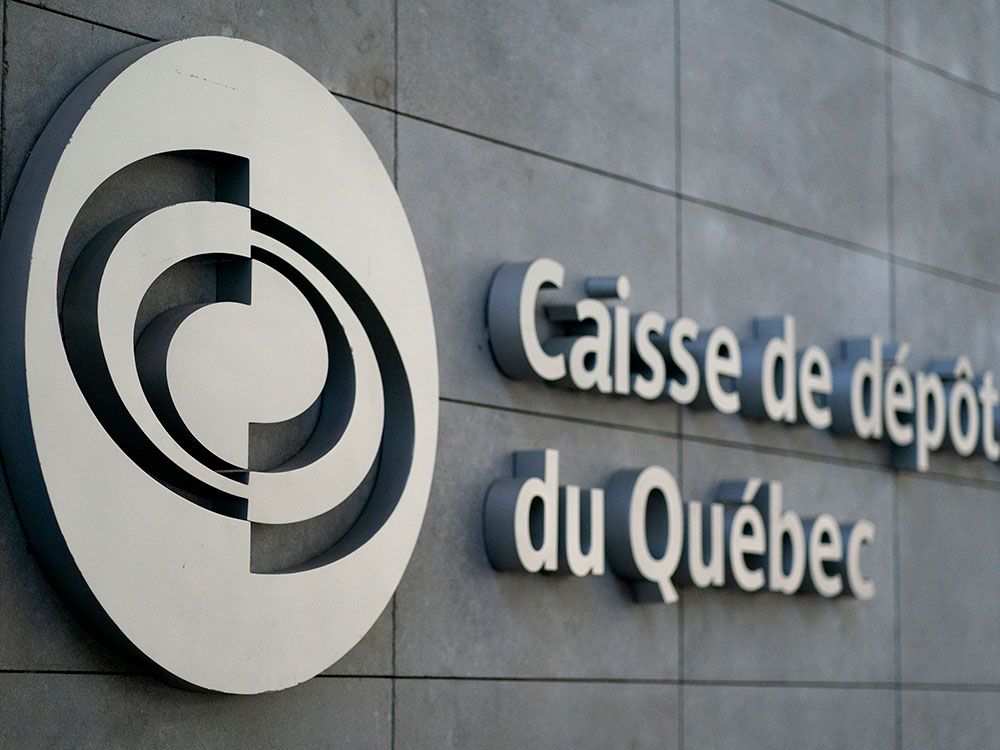Pension fund writes off $150-million investment in bankrupt Celsius
Publishing date:
Aug 17, 2022 • 7 hours ago • 3 minute read • 22 Comments
The Caisse de dépôt et placement du Québec posted a negative return of 7.9 per cent for the first six months of the year. Photo by Allen McInnis / Postmedia The Caisse de dépôt et placement du Québec posted a negative return of 7.9 per cent for the first six months of the year, in what chief executive Charles Emond noted was the worst period for stock and bond markets over the past 50 years.
As of June 30, the Caisse had net assets of $392 billion, with the $28.2-billion decrease due to investment losses of $33.6 billion offset by $5.4 billion in net deposits. The losses included a full write off of the fund’s US$150 million investment in crypto lender Celsius Network LLC, which is now in Chapter 11 bankruptcy proceedings in the United States.
“The first six months of the year were very challenging,” Emond said in a statement. “The mix of factors we faced had not been witnessed in several decades: spiking inflation that triggered rapid and sharp interest rate hikes, rare simultaneous corrections in both stock and bond markets, fears of an economic downturn and the war in Ukraine with its many collateral effects.”
Over the same period, the Ontario Teachers’ Pension Plan Board reported a positive return of 1.2 per cent on Monday.
During a news conference Wednesday to discuss the Caisse results, Emond said the Quebec pension fund wrote off the Celsius crypto investment even though it is considering its legal options and intends to preserve its rights in the court-monitored U.S. bankruptcy proceedings.
“We decided to take it now” out of prudence, Emond said of the writeoff. “The last chapter hasn’t been written.”
Advertisement 2 This advertisement has not loaded yet, but your article continues below.
He said his team conducted extensive due diligence with outside experts and consultants. They were aware of management and regulatory issues at Celsius and underestimated the time it would take to resolve them, he said, adding the Caisse was keen on “seizing the potential of block chain technology” and perhaps the investment in Celsius had been made “too soon” in the company’s development.
He noted that the investment was a very small part of a large venture portfolio that has produced 35 per cent returns over the past five years.
“In these disruptive technologies, there’s ups and downs…. Some big winners and many losers,” Emond said.
Although the Caisse posted an overall return in negative territory for the first six months of the year, the performance exceeded that of its benchmark portfolio — which posted a negative return of 10.5 per cent.
Advertisement 3 This advertisement has not loaded yet, but your article continues below.
“Over five and 10 years, annualized returns were 6.1 per cent and 8.3 per cent respectively, also outpacing benchmark portfolio returns,” the pension manager noted.
Emond said the Caisse is managing the “turbulence” with a combination of asset diversification and strategic adjustments made since the COVID-19 pandemic began.
“For the past two years, we’ve been working in an environment of extremes characterized by particularly fast and pronounced changes. These unusual and unstable conditions will persist for some time,” he said.
“In the short term, we’ll be watching what central banks do to contain inflation and how that impacts the economy.”
More On This Topic Ontario Teachers’ Pension Plan Board ekes out small return in ‘difficult’ markets CPPIB breaks winning streak with $23-billion loss amid ‘market turbulence’ Canadian watchdogs join probe of Celsius’ multi-billion-dollar collapse, sources say This advertisement has not loaded yet, but your article continues below.
Article content During the first six months of the year, negative returns in equities and fixed income were partially offset by gains in the Caisse’s investments in real assets including infrastructure and real estate.
The pension giant posted a negative return of 13.1 per cent in fixed income, which beat the negative 15.1 per cent return for its benchmark portfolio. This represented nearly $3 billion in “value added” attributable to all credit activities, the Caisse said.
A negative return of 16 per cent in equities beat the negative 17.2 per cent return in the benchmark portfolio.
The Caisse’s real estate and infrastructure portfolios, meanwhile, generated a 7.9 per cent six-month return, “demonstrating their diversifying role which contributes to limiting inflation’s impact on the total portfolio.”
This advertisement has not loaded yet, but your article continues below.
Article content The real asset class performance also beat the benchmark portfolio’s return, which was 2.4 per cent.
“So that asset class played its role. The two portfolios are doing well,” Emond said.
He said it is challenging to compare the short-term performance of Canadian pension funds because they have e different mandates and investment models. The Ontario Teachers’ Pension Plan, for example, has less exposure to equity markets than the Caisse and more exposure to natural resources and commodities, which performed well in the first half of the year.
• Email: bshecter@postmedia.com | Twitter: BatPost
Financial Post Top Stories Sign up to receive the daily top stories from the Financial Post, a division of Postmedia Network Inc.
By clicking on the sign up button you consent to receive the above newsletter from Postmedia Network Inc. You may unsubscribe any time by clicking on the unsubscribe link at the bottom of our emails. Postmedia Network Inc. | 365 Bloor Street East, Toronto, Ontario, M4W 3L4 | 416-383-2300
